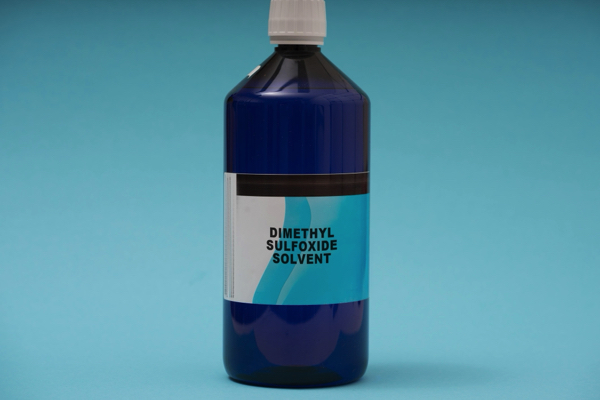"DMSO" by Drs. Donsbach and Walker elaborate on the untapped potential of this healing agent
- DMSO was first synthesized in 1866 but gained medical attention in the mid-20th century. Over 11,000 studies highlight its therapeutic benefits, including pain relief and treatment of conditions like arthritis, scleroderma and interstitial cystitis.
- Despite global recognition, the FDA only approves DMSO for organ preservation and interstitial cystitis, restricting broader medical use despite extensive evidence of efficacy.
- "DMSO" by Dr. Kurt Donsbach and Dr. Morton Walker shares stories of how patients like Carter Monroe (phantom limb pain), Colleen Stephane (aseptic necrosis) and Minerva Witherspoon (spinal arthritis) experienced dramatic relief after DMSO treatment, showcasing its potential for untreatable conditions.
- DMSO penetrates skin and biological barriers, aiding drug delivery and reducing inflammation. Critics argue FDA delays hinder access, while historical safety concerns (e.g., 1960s animal studies) persist despite over 1,200 supporting publications.
- Advocates push for wider acceptance, citing transformative patient outcomes, but legal restrictions and regulatory hurdles continue to limit accessibility. DMSO's potential as a versatile therapeutic agent remains underutilized in mainstream medicine.
Dimethyl sulfoxide (DMSO) is a compound with a long and fascinating history, marked by both remarkable therapeutic potential and regulatory controversy. First synthesized in 1866 by Alexander Zaytsev, DMSO remained largely unexplored until the mid-20th century when researchers began uncovering its unique properties.
The book "DMSO" by Dr. Kurt Donsbach and Dr. Morton Walker highlights several compelling cases that demonstrate the compound’s therapeutic power.
Since its discovery, over 11,000 studies have documented its benefits – ranging from pain relief to treating conditions like scleroderma, interstitial cystitis and arthritis. Despite its proven efficacy in many countries, the
Food and Drug Administration (FDA) has only approved DMSO for two specific uses: Preserving organs during transplantation and managing symptoms of interstitial cystitis.
This limited approval has not stopped countless individuals from using it as an alternative treatment for joint pain, inflammation and other ailments. This is because DMSO possesses the ability to be absorbed through the skin and deliver rapid relief.
One such case involves Carter Monroe, a man who suffered from phantom limb pain for forty years after losing his leg in an accident. When treated with DMSO for an unrelated case of tennis elbow, his phantom pain – previously untreatable – vanished completely.
Another striking example is that of Colleen Stephane, a 76-year-old woman with aseptic necrosis of the hip. After topical DMSO application, she regained mobility and could walk without a limp – a dramatic improvement that left her physician, Dr. Murray Franklin, both amazed and cautious due to the drug's experimental status.
Similarly, Minerva Witherspoon – a 70-year-old woman with spinal arthritis – found relief through DMSO treatments and was able to resume daily activities pain-free. Her healing came about due to Florida specialist Watson Walden's use of DMSO on his patients.
Beyond pain management, DMSO has shown promise in reducing inflammation, combating infections and even enhancing drug delivery to hard-to-reach tissues including the brain. Its ability to penetrate biological barriers makes it a valuable tool in medicine, earning it the nickname "tomorrow's aspirin."
Dr. Stanley Jacob, a pioneer in DMSO research at
Oregon Health & Science University, played a key role in demonstrating its immune-modulating and tissue-healing properties. Yet, despite these benefits, regulatory hurdles persist.
The FDA has been criticized for its slow approval process, with critics arguing that bureaucratic delays prevent patients from accessing a potentially life-changing treatment. Over 1,200 scientific publications and international symposia have endorsed DMSO's safety and efficacy, yet the agency maintains that further research is necessary.
The reluctance to approve DMSO stems partly from historical concerns. In the 1960s, studies on animals revealed eye changes, prompting the FDA to halt research – a decision that remains contentious. Today, DMSO is widely used in veterinary medicine, particularly for treating arthritis and injuries in animals.
In states like Florida, physicians are educated on its applications through seminars organized by the DMSO Society of Florida. However, legal restrictions in most states prevent patients from self-administering the compound – leaving many to seek it through alternative channels.
As the debate over DMSO continues, one thing is clear: Its potential is too significant to ignore. The stories of patients like Monroe, Stephane Witherspoon underscore its ability to transform lives.
DMSO's journey is far from over, but its promise as
a revolutionary treatment for pain, inflammation and disease makes it a subject worthy of serious attention. The question remains: When will the medical establishment fully embrace this powerful healing agent?
Watch this video about the book
"DMSO" by Dr. Kurt Donsbach and Dr. Morton Walker.
This video is from the
BrightLearn channel on Brighteon.com.
Sources include:
Brighteon.ai
Brighteon.com










